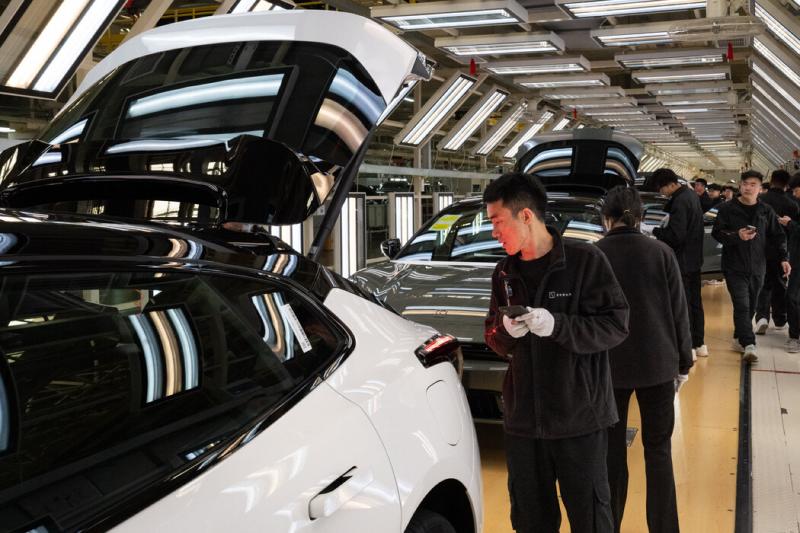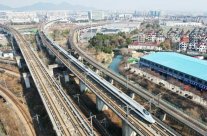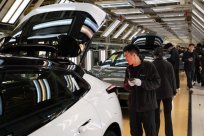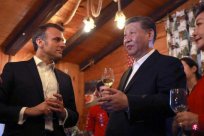
For decades, China has been leading more and more industries. From the toy and clothing industry in the 1980s, to today's semiconductor and renewable energy.China now produces one -third of global products, surpassing the sum of the production of the United States, Germany, Japan, South Korea, and Britain.The trade surplus from these commodities is equivalent to 10%of the entire Chinese economy.
But the continuous growth of these exports has triggered the sound of "overcapacity" of its manufacturing industry in China's largest trading partner.The top leaders in the United States and Europe have begun to call on China to reduce exports to the world and increase imports.President Biden has greatly improved the tariffs on the United States' imported electric vehicles, solar panels and other high -tech finished products imported from China.
China's industrial policy has a consistent focus.
Almost ten years ago, a large plan called Made in China 2025 was launched. The goal was to allow China to replace key imported products with products made in 10 advanced manufacturing fields.The state -controlled banking system guides loans to these key industries.
Ten years will pass, and the domestic economy is being dragged mainly from the real estate market.It has been ordered to increase loans from many of them to make up for the impact of the slowdown in consumer expenditure while increasing export efforts.
For Chinese economic policy makers, this strategy is no stranger.
The way of operation of this strategy is: the choice of investment in family is reduced, so ordinary people have to deposit a lot of money into the bank, although the deposit interest rate is very low.The bank then loaned these funds to startups and other companies.According to data from the People's Bank of China, industrial net loans have increased significantly, from $ 83 billion in 2019 to $ 670 billion last year.
Local help to provide help for key industries.The form of help includes providing cheap land for factories, building new highways for freight vehicles, and high -speed railways and other infrastructure.
A research calculation of the Kil World Economic Research Research Institute in Kir, Germany stated that in 2022, a direct subsidy for listed companies with more than 99%of Chinese listed companies.
But the salary of factory workers is low, which helps improve the competitiveness of the Chinese manufacturers.The household registration system limits the ability of rural families to move to the city's permanently. If farmers can obtain urban hukou, they will be eligible to enjoy better labor benefits.
The growth of many industries in China has aroused concerns about the job positions of the United States and other countries to lose their jobs in the country.U.S. tariffs are currently targeted at exports of some of China's largest and fastest growing industries.
The export of car is growing rapidly.
The automotive industry is a typical example of how China can quickly gain the dominance of the manufacturing industry.
Only four years ago, China was still a weak country exported. Each year, only 1 million low -cost cars were exported to the Middle East and other markets.Now China has greatly surpassed Japan and Germany, becoming the world's largest car exporter.China now exports nearly 6 million cars, sport -type multi -purpose vehicles, pickups and trucks.
Three -quarters of these export cars (especially exported to Russia and developing countries) are gasoline engine cars. There are fewer people who want to buy such cars in China.Charging the car is cheaper than cheering the car.
China's pure electric vehicle manufacturers are expanding their production capacity to build the fleets that transport these cars to distant markets (especially Europe).Automotive manufacturers will launch 71 electric vehicles in China this year, many of which are equipped with a large number of advanced functions, but the price is lower than the same -all -Western -owned configuration.

China is currently in the world's leading position in the production of electric vehicle batteries.
China was far behind the West when the production of electric vehicle batteries started, and Chinese officials knew this.
Chinese companies currently produce batteries for most electric vehicles worldwide.Battery technology in the past few years means that the battery life of electric vehicles is longer.
According to a new report from the Atlantic Council in Washington, China's lithium -ion battery exports have jumped from US $ 13 billion in 2019 to $ 65 billion last year.Nearly two -thirds of these batteries were exported to Europe and North America.The rest are mainly sold to East Asia. They are usually assembled as products, and they are eventually sold to Europe or North America.
Turn to solar energy to reduce dependence on oil imports.
Solar panels have been used as the primary task for a long time to reduce dependence on imported oil and other fossil fuels. These imports are used by another geopolitical opponent in the United States or China India.The production capacity of Chinese solar panels has expanded tenfold between 2008 and 2012, which led to about 75%of the world's solar panel prices, which also caused many factories in the United States and Europe.
As the price of solar panels plummeted, China's three major manufacturers have suffered their own financial collapse, causing banks to carry loan losses.Smaller competitors buy their factories as less as the original construction cost.These second -generation companies can create solar panels at a lower cost and invest in cutting -edge technology research.
Chinese companies now produce almost all solar panels in the world.China's photovoltaic battery exports have doubled in the past four years and reached $ 44 billion last year. The Bayeng government is raising tariffs on Chinese photovoltaic batteries.China is also exporting to the country's photovoltaic silicon wafer at two times. Photovoltaic silicon wafers are key components of photovoltaic batteries.
The United States' restriction on chip exports has promoted China's changes.
The export control of the United States limits the most advanced semiconductor and its manufacturing technology exporting to China. Such products account for about 5%of the semiconductor market.But with the help of huge subsidies, Chinese companies have become more competitive in other products that account for 95%of the market.
Chinese chips are used in various equipment in the West, including many cars.Even the gasoline engine of the car is usually controlled by Chinese semiconductor.

Why does the West take action now?
The election of the United States in November this year has brought political pressure to President Biden, allowing him to show that he is taking a tough position on China.
Trade issues have also been closely linked with security concerns.Russia's war on Ukraine is making people see that the victory and defeat of the war may partnesonly depends on which one to create more drones, artillery shells and vehicles.
China said that the growing trade surplus is a reasonable result of improving competitiveness in Chinese enterprises.
Jorge Toledo Albi? ANA, head of the European Union delegation, did not agree with this statement.In a speech last week, he said, "In Europe, the pressure on response is increasing, because people generally believe that the unfair competition faced by our company and investors is deteriorating."




